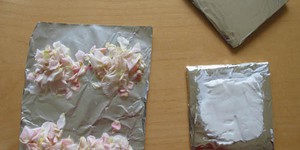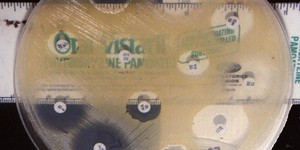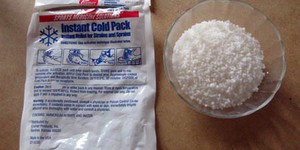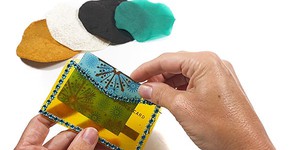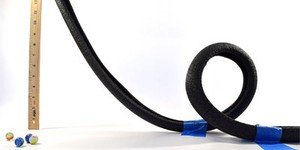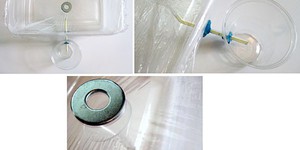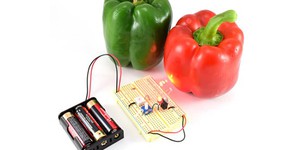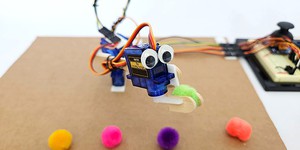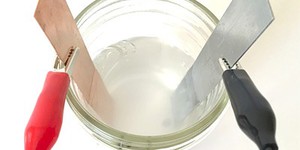High School Science Projects (638 results)
Science Buddies' high school science projects are the perfect way for high school students to have fun exploring science, technology, engineering, and math (STEM). Our high school projects are written and tested by scientists and are specifically created for use by students in the high school grades. Students can choose to follow the science experiment as written or put their own spin on the project.
For a personalized list of science projects, high schoolers can use the Science Buddies Topic Selection Wizard. The wizard asks students to respond to a series of simple statements and then uses their answers to recommend age-appropriate projects that fit their interests.
|
Select a resource
Sort by
|
Have you ever watched your parents dress up for a big evening? They may even splash on a bit of aftershave cologne or dab on some perfume since it is special occasion. But did you know that using perfume and scents is an ancient activity? Perfumes and the art of making perfume is an art that is thousands of years old. In this chemistry science fair project, you will learn more about one way to make perfume, called enfleurage, and experiment with it to extract your own floral scents.
Read more
Featured
Have you heard that garlic powder is supposed to inhibit the growth of bacteria? Which do you think would make a better disinfectant: a solution of garlic powder or a solution of bleach? This project shows you a straightforward way to compare the effectiveness of different disinfectants (or other antimicrobial agents), by measuring zones of inhibition on a culture plate.
Read more
Astronomers can figure out what distant stars are made of (in other words, their atomic composition) by measuring what type of light is emitted by the star. In this science project, you can do something similar by observing the color of flames when various chemicals are burned.
Read more
Instant cold packs are popular with coaches and parents for treating minor bumps and bruises. The instant cold packs are not pre-cooled—you just squeeze the cold pack and its starts to get cold. So how does it work? In this chemistry science fair project, you will investigate the chemical reaction that occurs in instant cold packs.
Read more
Can you imagine clothing, handbags, or shoes made from seaweed or spider silk? To become more sustainable, the textile industry is looking for ways to develop more eco-friendly fabrics. Biofabrics derived from living organisms such as seaweed or bacteria have been proposed as a potential alternative to conventional fibers. In this science project, you will make several biofabrics from alginate (seaweed) and conduct tests to find out which one is most suitable as a textile replacement.
Read more
If you'd like to investigate the physics of amusement park rides, then this project is for you. You'll build a roller coaster track for marbles using foam pipe insulation and masking tape, and see how much the marble's potential energy at the beginning of the track is converted to kinetic energy at various points along the track.
Read more
How can seawater from the oceans be turned into fresh water that is suitable for people to drink? Through a process called solar desalination! In this science project, you will make a solar desalination apparatus using readily available materials, and a power source that is free. How much water can the device produce, and is it still salty at all? What factors affect how effectively saltwater is turned into fresh water?
Read more
When you go to the supermarket, how do you pick out ripe fruits and vegetables? You might look at their size or color, or feel them for firmness. That might be easy to do when you pick out a half dozen apples, but imagine if you had to examine thousands of apples growing in a field, or strawberries coming down a conveyor belt getting ready for packaging. Suddenly, it is a lot harder to do yourself! What if a machine could pick and sort the produce for you? In this project, you will address part…
Read more
Robotic arms have many uses, ranging from assembling things in factories to collecting soil samples on Mars to acting as prosthetics (artificial limbs) for humans. If you have ever wanted to build your own robotic arm, this project will guide you through the basics of designing and building a simple one. You can use this design as a starting point to design your own robotic arm and add your own features.
Read more
Have you ever wondered how your cell phone or laptop keeps running once you unplug it? Sure, it is the battery that makes your portable electronics work, but how exactly does a battery do that, and from where does the electricity come? Generally, in a battery chemical energy is converted into electrical energy. In fact, many different types of batteries exist that are all based on a different set of chemical reactions. In this science project, you will explore a special battery variant called…
Read more
Have you ever heard or read about GMO?
GMO stands for
genetically modified
organisms.
Scientists can deliberately modify the DNA of organisms, such as bacteria or plants, to change their properties for a specific purpose. For example, crops can be modified to become more drought- or pest-resistant. Genetic engineering is a very powerful tool in biotechnology that has already found many different applications in agriculture, medicine, and industry. In this project, you will engineer a…
Read more
|
Explore Our Science Videos
Basic Circuits Kit: Conductors and Insulators
Junkbots Lesson Plan Introduction
Vibration & Sound: Make Sprinkles Dance


